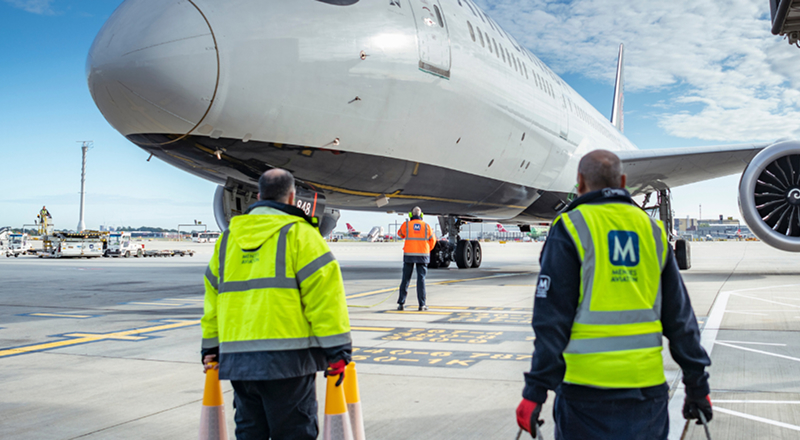How Better Warehouses Increase Trade in Africa

Kuwait-based Agility Logistics Parks customers can log-on to view contracts and make payments.
UK MOD personnel can log-in to the GRMS portal to schedule household relocation shipments.
Kuwait-based Agility Logistics Parks customers can log-on to view contracts and make payments.
UK MOD personnel can log-in to the GRMS portal to schedule household relocation shipments.
When a shirt is shipped from China to a shop in Europe, it passes through a complicated and sometimes slow supply chain, involving many different parties, manual data entry and a stack of paper documents.
What’s more, the retailer needs to trust that the shirt is on its way, and usually needs to make payment before it arrives.
Now imagine that the shirt is embedded with an intelligent chip and can be tracked using distributive ledger technology.

As it leaves the factory, it sends a digital signal that it’s on its way. Since this data is recorded in the blockchain, it is secure, immutable and can be trusted by all parties – no one needs to double check or verify that the shirt is on its way.
The retailer can pay for the shirt with assurance that it’s in transit, and the sender can instantly verify that the right person is collecting or receiving the goods.
In short, it’s faster, cheaper and more efficient way to send an item around the world.
This is how blockchain could change the face of logistics: by fostering trust between all parties and eliminating the need to manually track shipments, sign documentation and verify payments.
Blockchain was made famous as a platform to trade cryptocurrencies like Bitcoin. But it has many uses beyond digital money. It is a secure record of transactions, a ledger, in which all data can be publicly verified and shared.
Offering a new way to send, store and verify information, the technology has trust at its core. Its secure, scalable and decentralized nature means its applications are potentially limitless. It could change the way we process and store health records as well as revolutionizing the way we shop, save and invest.
All that means the global blockchain market will be worth $23 billion by 2023, up from around $1 billion in 2018, according to MarketsandMarkets research.
Blockchain technology has the potential to make shipping and logistics cheaper, safer and more reliable. It can be used to verify and store information all along the supply chain, as well as connecting different parties, giving them access to data and real-time tracking of goods as they move around the globe.
By embracing it, the industry could lower costs and ease friction. Documentation and administration are estimated to be one-fifth of the $1.8 trillion spent annually to move goods across borders.
The key benefits of blockchain are speed, transparency and security. This generates a high level of trust in a transaction, unleashing a powerful tool for the logistics industry, where transactions involving many different parties and milestones are common.
For example, a very simple supply chain involves the shipper, banks, an assembly manufacturer, parts suppliers, modal carriers, port authorities, freight consolidators, customs officials and many others. It’s easy to see the potential for blockchain in this scenario, enabling the shipper to unlock access to specific information for specific parties, while retaining complete visibility of the whole process.
By enshrining trust in a transaction, there’s no need to verify documents and timestamps, to certify authenticity, or to deliver certificates, streamlining every step in the pathway.

Even so, blockchain requires a collaborative approach, and one the industry might not yet be ready to embrace. To unleash its full potential, it needs the buy in and understanding of everyone along the supply chain, as well as agreement on a common approach and standards.
And without a critical mass, the risk is that too many providers try to create their own platform, meaning the results are disjointed.
Another challenge is the potential for a skills shortage. Finding and employing the right people with the necessary skills is essential to bridge the gap between those companies that have the knowledge and the technology in place, and those that don’t.
Fostering experimentation and collaboration will be key to success.
As discussed, distributive ledger technology is ready to go and has the potential to revolutionize our industry. Once a common approach is agreed, adopted, and achieved, its game-changing nature is likely to be unstoppable.
Agility is leading the conversation on how best to harness the potential of blockchain – helping our customers conduct pilots and working together to figure out the best ways forward.
We’ve already teamed up with Maersk-IBM to manage and track container shipments using blockchain, by identifying events associated with individual shipments and sharing information about them via the distributed ledger technology.
In this way, costs can be reduced, trade can be made more efficient, and standards can be set for an industry-wide adoption. Our aim is to help our customers understand how to use blockchain to improve shipment visibility, eliminate paperwork, reduce errors, and shorten transit times.
Blockchain could also help improve safety. Agility is part of a consortium of industry leaders exploring blockchain’s role in mitigating accidents and serious incidents onboard container ships.
Wrongly classified or inaccurately identified dangerous cargo leads to fires and other accidents that result in millions of dollars in losses, ship damage and delays in supply chains. Nearly a quarter of all serious incidents on containerships were attributable to mis-declared cargo, according to the Cargo Incident Notification System. It’s easy to see how blockchain could play a role in continuously tracking and monitoring what’s inside containers and reduce these risks.
Even as these examples show how blockchain is set to change the world, our industry is lagging behind. By recognizing the full potential of the technology and collaborating to foster experimentation, Agility is ready for the disruption that’s in train, and will be prepared when the pace of change accelerates.
Use of blockchain for shipping remains largely in the pilot and concept stage for the moment. That’s likely to remain the case until there is wider industry participation that creates a tipping point.
Companies developing blockchain solutions are trying to figure out how to monetize a technology that requires so many participants to create an ecosystem. They need to incentive early adopters who can create more use cases and scale the number of transactions taking place with blockchain.